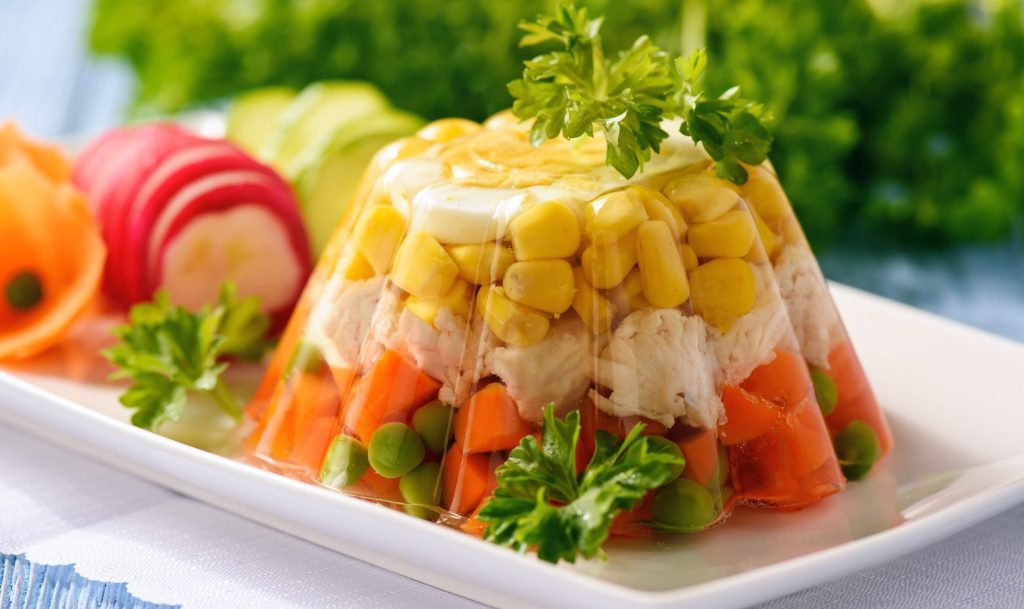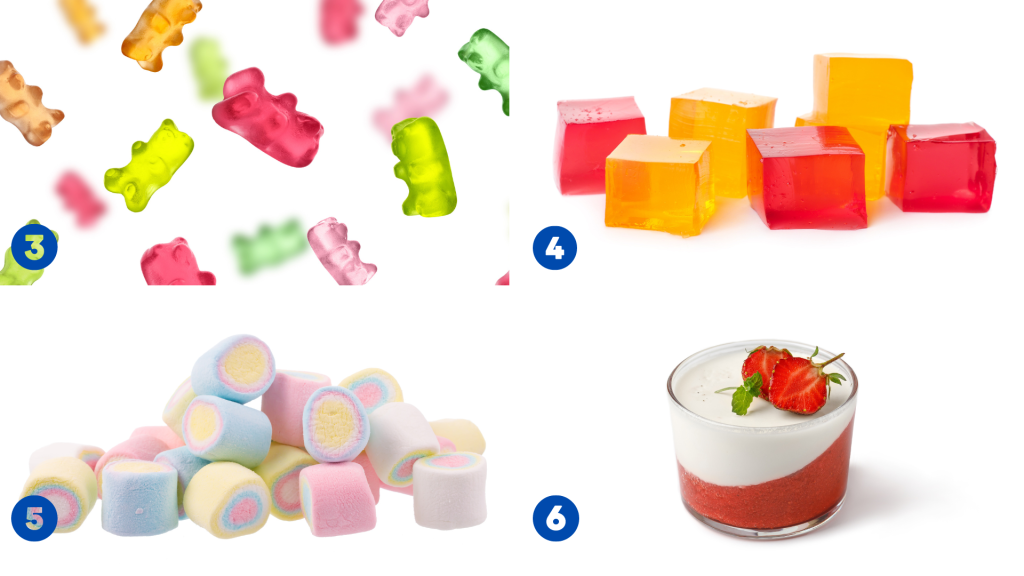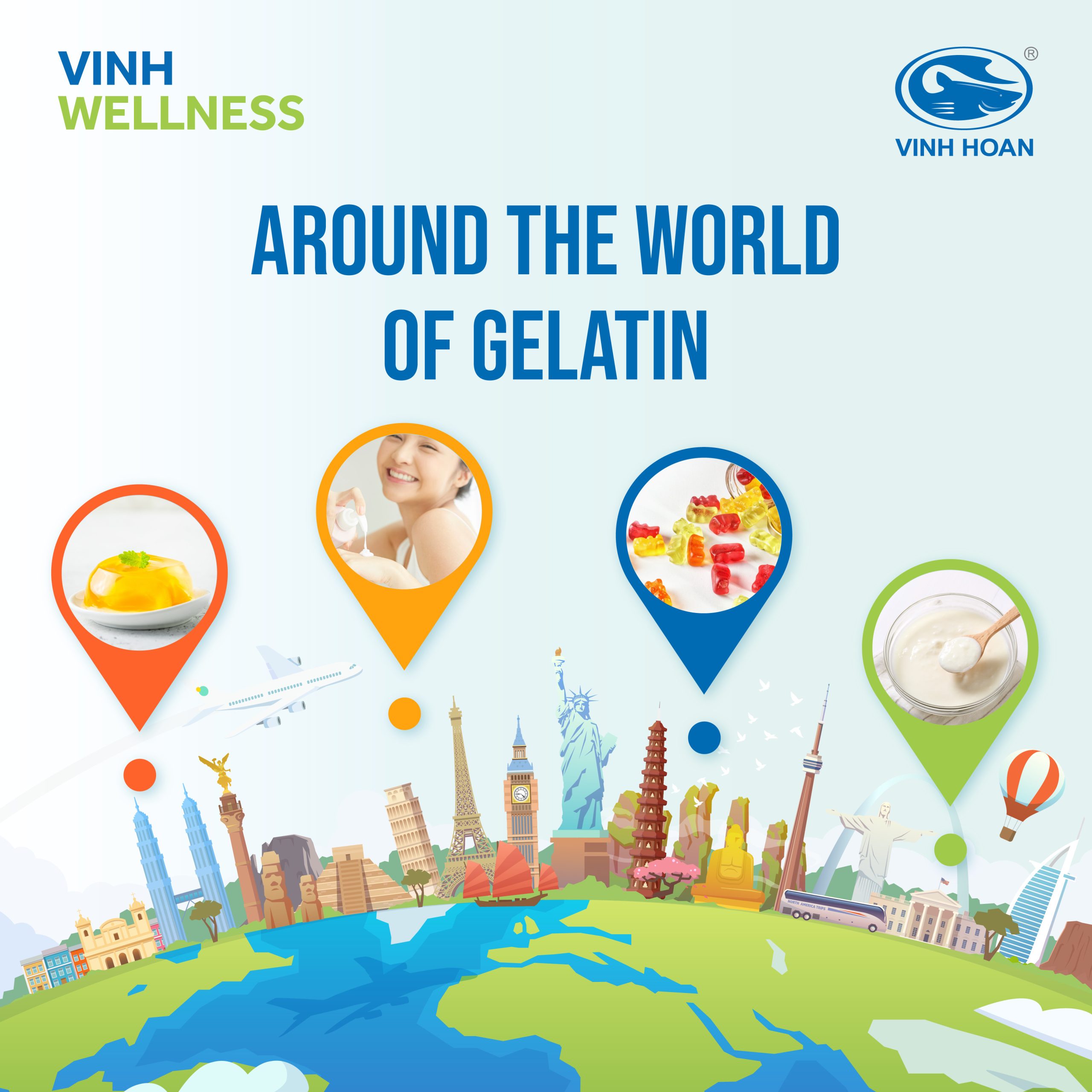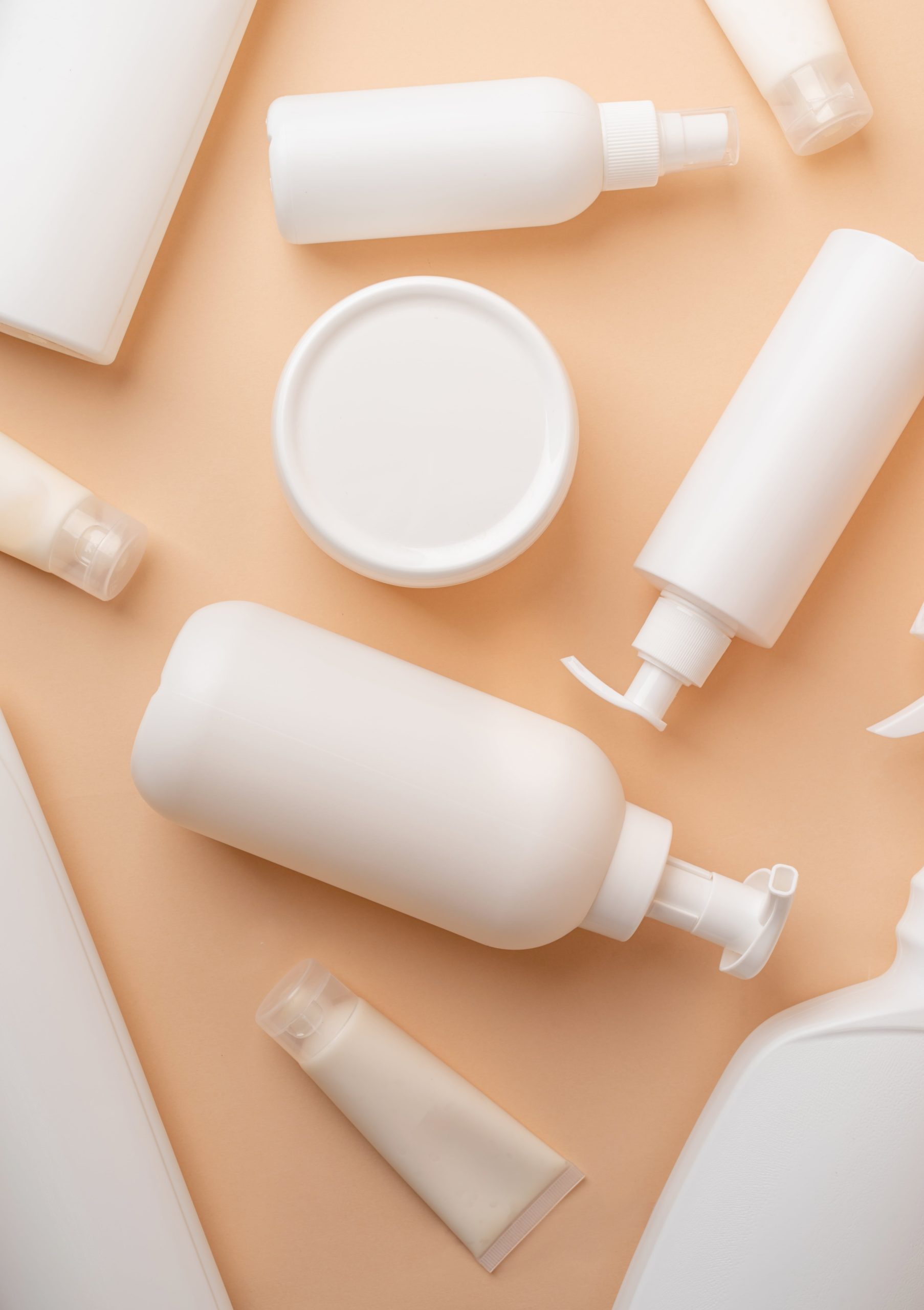1. Aspic
Among the most famous gelatin-based preparations, aspic stands out, a term that indicates a savory jelly consisting of meat, fish, or vegetables enclosed in a gelatin casing. The official inventor of the recipe is Napoleon’s chef, Marie-Antoine Carême. Spectacular and eye-catching, aspic was also one of the cult dishes of the 80s and early 90s, even in the sweet fruit variant. The strong point of the dish is the transparency that allows you to see its beautiful ingredients and thus enables it to create a colorful and original taste and feel.
2. Canned meat
Another critical product that uses gelatin is canned meat. In canned food, gelatin can also be used as a thickener and improve the protein content of finished products, and the protein content of gelatin itself has reached more than 95%. During the cooking process, gelatin also helps keep the water in the products, improving the output.

3. Gummy bears!
Gelatin has played an even bigger role in the development of the gummy bear, now gelatin’s biggest food category. It was in 1922 that German confectionery pioneer and Haribo founder Hans Riegel invented and launched the gummy bear. In the coterie of gelatin-based fruit chews like wine gums and gumdrops present in the UK from the turn of the century, the little gelatin-based, colorful bears soon took off in Germany, the rest of Europe and are now near-staple candies loved by children and adults alike the world over. Gelatin-based gummy bears have also more recently become popular as a new dietary supplement format pushing the global gummy market above $16 billion.
4. Jelly
The gummy bear is not alone in conquering the planet. Jelly, which unsurprisingly derives its name from gelatin, was probably first made in Medieval Europe or the Middle East as a dessert and it remains popular in those places.
5. Marshmallows
Marshmallows remain a favorite to roast around a campfire and have become a common accompaniment to the global spread of cafe babyccinos! It is usually made from just egg albumen and gelatin – remains popular after first appearing in ancient Egypt then re-emerging in France in the mid-1800s before being popularized in the US and Europe and places like Australia in the 20th century.
6. Yogurt Gelatin Dessert
Dairy products in nutritional food have always occupied a position that cannot be ignored; the most representative is yogurt. The gelatin in yogurt creates a smooth, firm, consistent texture that binds the product together and gives it a more appetizing appearance.
Compared with the traditional way of production, manufacturers changed the yogurt process by adding food thickeners, such as gelatin. In this way, the appearance and taste of yogurt are similar, and the properties of the yogurt remain stable. Effectively prolongs the shelf life of yogurt so that the factory can produce large-scale production.




